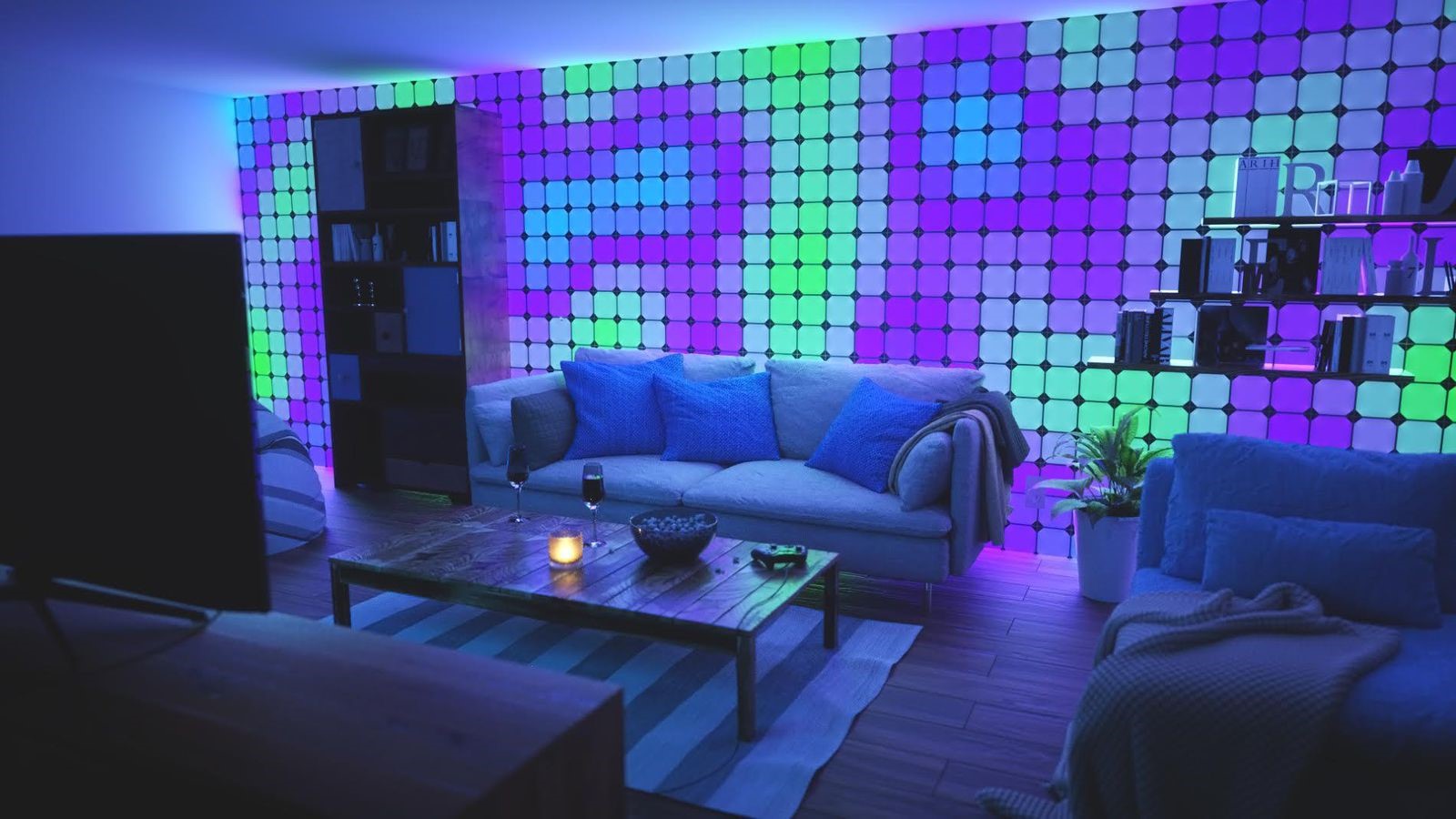
By Heather Hamilton, contributing writer
CES 2018 unveiled a new Nanoleaf , a lighting startup that formerly focused on smart bulbs. The company has shifted gears from promoting Aurora light panels that change colors. They’re highly configurable and can be synced to the music of choice, allowing users to stick panels to the wall in designs of their choosing, controlling them via Alexa, Google Assistant, and Siri.
Nanoleaf reports that the Nanoleaf Light Panels sold out at their Museum of Modern Art retail launch as well as during the Best Buy Black Friday sale, accounting for approximately 75% of overall revenue, reports CNET .
At CES, Nanoleaf introduced a square-shaped version of the light panel, which will sell for a yet unreleased price under a name that has not been decided. The new panel will respond to touch, allowing users to turn them off or on, dim and raise the lights, and change the color with a tap. They’ve changed the base station, too — it now contains a music sync microphone and motion sensor.
Previously, up to 30 panels paired with a single base station. The new square panels allow for 1,000 per base station but may require extra power to reach optimal brightness. The original kit of nine panels, a base station, and music sync sells for $230, and Nanoleaf hopes to keep Version 2 similarly accessible, which might be difficult given the functionality of the product.
CNET predicts that the big draw for the new panel kit will be nightclubs and concert halls. Currently, Nanoleaf has partnered with a Toronto nightclub and views the space as a great opportunity to showcase new products. “These are the kinds of spaces that scream potential to us,” a Nanoleaf spokesperson told CNET.
Nanoleaf also introduced a new remote for the lights, dodecahedron-shaped (it resembles a large die) and retailing for $50. Different lighting scenes and color palettes are associated with each of the remote’s 12 sections, allowing the user to simply rotate the face that they’re going for to the top. Both the remote and the panels are compatible with Apple HomeKit, but the remote is designed for switching between scenes that a user has previously set up.
The Verge writes that “you might have an evening scene with dim lights, a party scene with loud music, or a study scene with the lights up and the music off … It all sounds pretty strange and confusing, to be completely honest.” They also point out that a person would need to own quite a few smart home gadgets before they could come up with 12 different scenes worth programming.
Eventually, says CEO Gimmy Chu, the software will be open to outside developers to allow for things like third-party apps.
Advertisement
Learn more about Electronic Products Magazine





